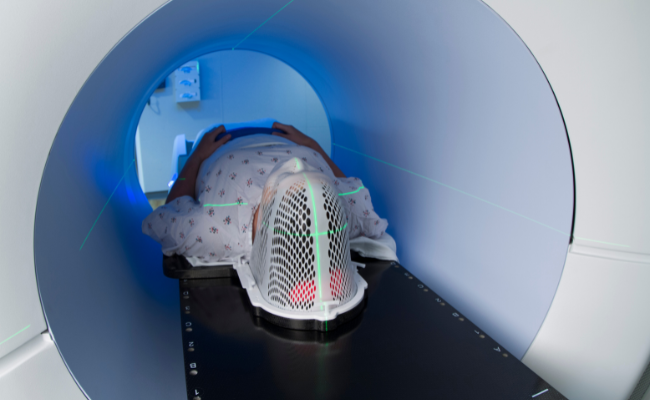What to do incase of Head And Neck Cancer?
- January 10, 2024
- No Comments

What is Head and Neck Cancer?
Head and Neck Cancer stands as a collective term encompassing a group of cancers originating in the intricate web of the head and neck region. This comprehensive term includes cancers affecting the oral cavity, pharynx, larynx, paranasal sinuses, nasal cavity, and salivary glands. These cancers, rooted in the intricate balance of soft tissues, bones, and mucous membranes within the head and neck, pose a formidable health threat. Primarily emerging from the squamous cells lining the mucosal surfaces, they demand attention due to their potential for rapid progression and diverse implications.
Why is Head and Neck Cancer a Concern?
The significance of Head and Neck Cancer arises from its profound impact on fundamental physiological functions such as breathing, swallowing, speaking, and hearing. Adding to the complexity is the proximity of these cancers to critical structures like the brain, spinal cord, and major blood vessels, intensifying the challenges of treatment and elevating the risk of severe complications.
Several risk factors contribute to the development of Head and Neck Cancer, ranging from lifestyle choices to viral infections. Tobacco and alcohol use, human papillomavirus (HPV) infection, prolonged sun exposure, a diet deficient in fruits and vegetables, and a compromised immune system are identified as significant contributors. The urgency for early detection becomes apparent, underlining the need for individuals to be vigilant about potential symptoms and to seek medical attention promptly.
How to Recognize Head and Neck Cancer?
- Persistent Symptoms as Red Flags: Persistent pain, non-healing lumps or sores, difficulty swallowing, alterations in voice, persistent ear pain, and unexplained weight loss serve as red flags. If these symptoms persist beyond the two-week mark, prompt consultation with a healthcare professional is imperative.
- Proactive Self-Examinations: Regular self-examinations of the head and neck provide a proactive approach to early issue detection. Observing changes in the mouth, throat, or neck and promptly reporting any abnormalities to healthcare providers form a crucial part of this self-monitoring process.
- Routine Screenings and Check-ups: Emphasizing the importance of routine screenings and check-ups with healthcare professionals, especially for those with known risk factors, plays a pivotal role in early detection. Dental check-ups, in particular, contribute to the timely identification of oral cancers.
Treatment Solutions for Head and Neck Cancer
- Surgical Precision: Surgical interventions emerge as a common approach for tackling Head and Neck Cancer. The extent of surgery depends on the location and stage of the cancer. Surgeons skillfully remove tumors, affected lymph nodes, or portions of organs to eradicate cancerous cells.
- Radiation Therapy's Precision Dance: Radiation therapy, wielding high doses of radiation, emerges as a potent weapon against cancer cells. It can function as a standalone treatment or complement surgery and chemotherapy. Technological advancements, exemplified by intensity-modulated radiation therapy (IMRT), ensure precision in targeting, minimizing collateral damage to healthy tissues.
- Chemotherapy's Pharmacological Warfare: Chemotherapy, employing drugs to halt or slow the growth of cancer cells, becomes a crucial ally. Often administered in conjunction with surgery or radiation therapy, the specific drugs utilized are tailored to the type and stage of the cancer.
- Targeted Therapy's Precision Strikes: Targeted therapy, a sophisticated approach, focuses on specific molecules pivotal to cancer cell growth. This strategy aims to disrupt signals promoting cancer growth while sparing healthy cells. Often integrated with other treatment modalities, targeted therapy adds a layer of precision to the therapeutic arsenal.
- Immunotherapy's Mobilization of the Body's Defenses: Immunotherapy harnesses the body's own immune system to recognize and eliminate cancer cells. This approach, particularly promising in Head and Neck Cancers linked to HPV infection, employs drugs like checkpoint inhibitors to enhance the immune response against cancer cells.
Benefits of Early Detection and Treatment
- The Dawn of Improved Prognosis: Early detection of Head and Neck Cancer fundamentally alters the prognosis, markedly enhancing the likelihood of successful treatment. Regular screenings and swift medical attention facilitate earlier interventions, positioning individuals for improved outcomes.
- The Symphony of Function Preservation: Timely treatment becomes the guardian of essential functions like swallowing, speech, and hearing. Early-stage cancers, amenable to treatments with minimal impact on these functions, underscore the importance of prompt intervention.
- The Easing of Treatment Intensity: Early-stage cancers often necessitate less aggressive treatments, translating to a lower overall intensity and duration of therapy. This reduction contributes to a better quality of life for individuals during and after treatment.
- The Canvas of Increased Treatment Options: Early detection unfurls a canvas of diverse treatment options. Healthcare professionals, armed with the knowledge of early-stage cancer, can tailor a comprehensive treatment plan addressing the specific characteristics of the disease.
Comments (0)